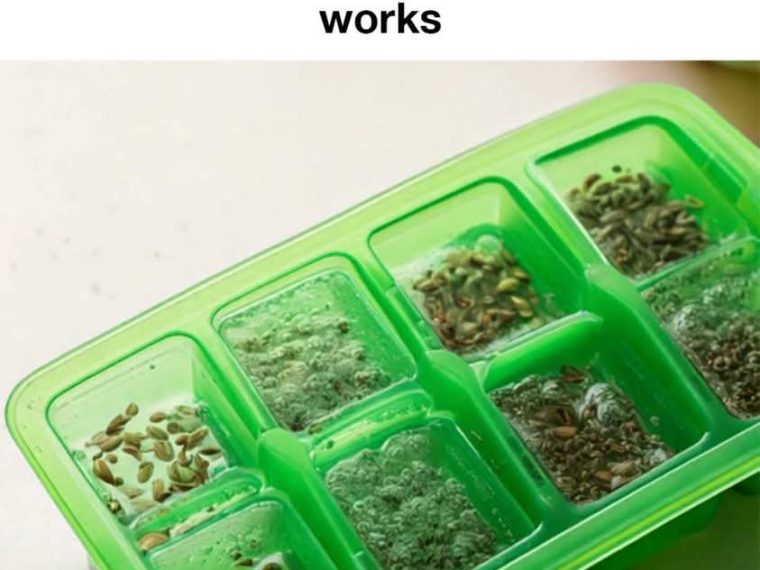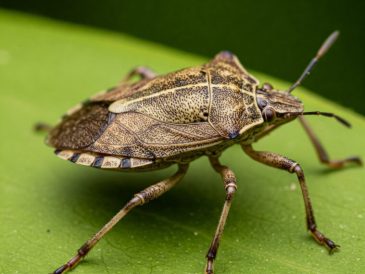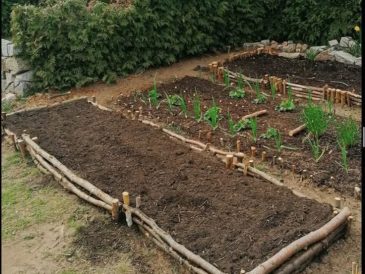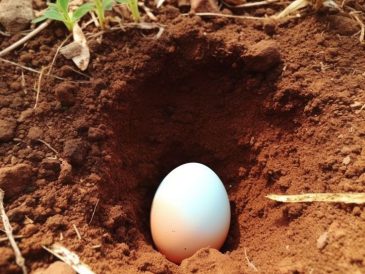For gardeners, the anticipation of seeing the first sprouts emerge from the soil is a moment of pure joy. However, waiting for seeds to germinate can often test one’s patience. My nana, a seasoned gardener with decades of experience, swears by a simple yet effective trick to speed up seed germination: using hydrogen peroxide. This method requires minimal effort and can significantly reduce the time it takes for seeds to sprout. In this article, we will explore how this easy trick works and how you can apply it to your gardening routine.
Understanding the Science Behind Seed Germination
Seed germination is a complex process that begins when a seed absorbs water, swells, and breaks through its outer shell. This process is influenced by several factors, including temperature, moisture, and oxygen availability. Once the seed coat is penetrated, the embryonic plant inside begins to grow, eventually pushing its way through the soil surface. Understanding these conditions is crucial for optimizing germination rates and ensuring healthy plant development.
The Magic of Hydrogen Peroxide: How It Works
Hydrogen peroxide (H2O2) is a common household chemical known for its antiseptic properties. In gardening, it serves as an oxygen supplement, helping to break down the seed coat and promote faster germination. The extra oxygen molecules in hydrogen peroxide can penetrate the seed coat more effectively than water alone, enhancing the seed’s ability to absorb moisture and initiate the germination process. Additionally, hydrogen peroxide can help eliminate pathogens that might otherwise hinder seed growth.
Step-by-Step Guide: Soaking Seeds in Hydrogen Peroxide Solution
To utilize hydrogen peroxide for seed germination, start by gathering your seeds and a small container. Fill the container with a solution of hydrogen peroxide and water, ensuring the seeds are fully submerged. Allow the seeds to soak for a specific period, depending on the seed type, before rinsing them thoroughly with water. This soaking process helps to soften the seed coat and kickstart the germination process.
The Exact Recipe: Measurements and Instructions
For most seeds, a 3% hydrogen peroxide solution is ideal. Mix one part hydrogen peroxide with ten parts water to create the soaking solution. Place the seeds in the solution and let them soak for 30 minutes to an hour. After soaking, rinse the seeds with clean water to remove any residual hydrogen peroxide. This method is suitable for a wide variety of seeds, but always check specific recommendations for the seeds you are using.
Why This Method Is Effective: The Science Explained
The effectiveness of hydrogen peroxide in seed germination lies in its ability to provide additional oxygen and sterilize the seed surface. The extra oxygen helps to break down the seed coat more efficiently, while the antiseptic properties reduce the risk of fungal and bacterial infections. This dual action not only speeds up the germination process but also increases the likelihood of successful seedling development.
Additional Tips: Enhancing Seed Germination Success
To further enhance germination success, consider pre-warming the soil or using a seedling heat mat to maintain optimal temperature conditions. Ensure that the planting medium is consistently moist but not waterlogged, as excessive moisture can lead to rot. Label your seeds and keep track of their progress to identify any issues early on. Additionally, using fresh seeds and storing them properly can make a significant difference in germination rates.
Alternative Methods: Other Ways to Speed Up Germination
1. Scarification
What it is: A method that involves physically weakening or breaking the seed coat to allow water and gases to penetrate more easily.
How it’s done: You can nick the seed coat with a knife, rub it with sandpaper, or soak it in hot water.
Best for: Seeds with hard outer shells, such as morning glories, sweet peas, or lupines.
Benefit: Helps overcome seed dormancy by allowing moisture to reach the embryo faster.
2. Stratification
What it is: A process that simulates natural winter conditions, exposing seeds to cold and moist environments for a period of time.
How it’s done: Place seeds in a moist paper towel or sand, seal in a plastic bag, and refrigerate for several weeks.
Best for: Seeds that require cold periods to germinate, such as lavender, milkweed, or many tree species.
Benefit: Mimics seasonal cycles, prompting seeds to germinate once they’re exposed to warmth again.
3. Using a Light, Well-Aerated Growth Medium (e.g., Vermiculite or Perlite)
What it is: A method that utilizes materials like vermiculite, perlite, or a seed-starting mix to create an ideal germination environment.
How it’s done: Sow seeds in a shallow tray or container filled with the chosen medium; keep it moist and warm.
Best for: Most small garden seeds, especially those sensitive to damping off or poor drainage.
Benefit: Provides excellent moisture retention and airflow, reducing the risk of rot and promoting healthy root development.
4. Warmth and Humidity Control
What it is: Ensuring seeds are kept at an optimal temperature and moisture level for germination.
How it’s done: Use a seedling heat mat to maintain soil temperatures around 70–85°F (21–29°C), and cover trays with plastic domes or bags to maintain humidity.
Best for: Warm-season crops like tomatoes, peppers, and melons.
Benefit: Accelerates germination time and increases success rates.
5. Paper Towel Method
What it is: A germination test or method where seeds sprout between moist paper towels.
How it’s done: Place seeds between damp (not soggy) paper towels, seal in a plastic bag or container, and store in a warm place.
Best for: Gardeners checking seed viability or starting delicate seeds indoors.
Benefit: Allows easy monitoring of sprouting without soil.
6. Use of Natural Growth Stimulants (e.g., Kelp Extract, Chamomile Tea)
What it is: Soaking seeds in natural stimulants to encourage quicker germination and healthier growth.
How it’s done: Prepare a diluted solution of kelp extract or chamomile tea and soak seeds for a few hours before sowing.
Best for: Organic gardens and heirloom varieties.
Benefit: Can improve germination rates and protect against fungal diseases.
Conclusion: Embracing Simple Solutions for Better Gardening
Gardening doesn’t have to be complicated, and sometimes the simplest solutions are the most effective. By incorporating hydrogen peroxide into your seed germination routine, you can enjoy faster results with minimal effort. This technique, championed by my nana, is a testament to the power of tried-and-true gardening wisdom. Whether you’re a seasoned gardener or a beginner, embracing these simple tricks can lead to a more productive and rewarding gardening experience.





